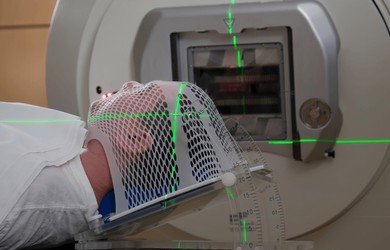Radiation therapy is a cornerstone in the treatment of head and neck cancers, often used alone or in combination with surgery and chemotherapy. As medical technology advances, innovative approaches to radiation therapy are transforming the way head and neck cancers are treated. These new techniques aim to maximize the treatment’s effectiveness while minimizing side effects and improving patient outcomes. This article explores some of the latest innovations in radiation therapy for head and neck cancer.
Intensity-Modulated Radiation Therapy (IMRT)

Intensity-modulated radiation therapy (IMRT) is a highly precise form of radiation therapy that allows for the delivery of radiation in varying intensities to the tumor. IMRT offers several advantages:
- Precision targeting: IMRT can shape the radiation beam to conform to the tumor’s three-dimensional shape, allowing for better coverage of the tumor while sparing healthy tissues.
- Reduced side effects: By minimizing exposure to surrounding healthy tissues, IMRT can reduce the risk of side effects such as dry mouth, difficulty swallowing, and damage to salivary glands.
- Better control: IMRT can be adjusted throughout treatment, allowing for more personalized care based on changes in the tumor’s size and position.
Image-Guided Radiation Therapy (IGRT)
Image-guided radiation therapy (IGRT) combines imaging technology, such as CT scans or MRIs, with radiation therapy to ensure precise targeting of the tumor. IGRT allows for real-time imaging during treatment, enabling clinicians to make immediate adjustments if necessary. This approach enhances the accuracy of radiation delivery and helps minimize damage to healthy tissues.
Stereotactic Body Radiation Therapy (SBRT)
Stereotactic body radiation therapy (SBRT), also known as stereotactic ablative radiation therapy (SABR), is a high-dose radiation therapy that targets small tumors with extreme precision. SBRT offers several benefits:
- Short treatment time: SBRT typically requires fewer treatment sessions than traditional radiation therapy, often completed in just a few sessions.
- High doses: The treatment delivers high doses of radiation directly to the tumor, maximizing effectiveness while sparing healthy tissues.
- Enhanced outcomes: SBRT has shown promising results in controlling tumor growth and improving patient survival rates.
Proton Beam Therapy
A form of radiation therapy called proton beam therapy treats cancer by using protons rather than X-rays.
Protons release their energy in a controlled manner, allowing for highly targeted radiation delivery to the tumor while minimizing exposure to surrounding tissues. Proton beam therapy is particularly beneficial for treating tumors in complex areas, such as the head and neck, where critical structures are in close proximity to the tumor.
Adaptive Radiation Therapy
Adaptive radiation therapy uses advanced imaging and treatment planning to adjust the radiation dose and target during each treatment session. This approach accounts for changes in the tumor’s size, shape, and position, as well as variations in patient anatomy. Adaptive radiation therapy allows for more personalized and precise treatment, improving outcomes and reducing side effects.
Artificial Intelligence and Machine Learning
Artificial intelligence (AI) and machine learning are playing an increasingly important role in radiation therapy for head and neck cancer:
- Treatment planning: AI algorithms can analyze medical images and patient data to optimize radiation treatment plans, ensuring precise targeting of the tumor while sparing healthy tissues.
- Treatment monitoring: AI can help monitor patients during treatment, detecting changes in the tumor or patient anatomy and enabling adjustments to the treatment plan as needed.
- Outcome prediction: Machine learning models can predict patient outcomes based on treatment data, helping clinicians make informed decisions about treatment options.
Hypofractionation and Hypofractionation
Fractionation refers to dividing the total radiation dose into multiple smaller doses delivered over several sessions. Innovations in fractionation include:
- Hypofractionation: This approach involves delivering smaller doses of radiation more frequently, such as twice a day. It can improve tumor control while reducing side effects.
- Hypofractionation: Hypofractionation delivers higher doses of radiation over fewer sessions. This approach can shorten the treatment timeline and may enhance patient convenience.
Immunotherapy-Radiation Combination

Combining radiation therapy with immunotherapy is an emerging strategy in head and neck cancer treatment. Radiation can enhance the immune system’s response to the tumor, making it more receptive to immunotherapy. This combination may lead to better treatment outcomes and improved survival rates.
Conclusion
Innovative approaches to radiation therapy in head and neck cancer are transforming the way these tumors are treated, offering patients more precise and personalized care with fewer side effects. From advanced techniques like IMRT, IGRT, and SBRT to the use of AI and machine learning, the future of radiation therapy holds great promise for improving patient outcomes and quality of life. As research continues, patients can expect even more groundbreaking developments in radiation therapy for head and neck cancer.
For any further queries, Plz visit drmonishagupta.com or you can check our social media accounts, Facebook, Instagram

